It’s a rainy early start of my journey to Europe, landing lightly at the house where the Proctor students, as well as where European Art Classroom co-directors Dave and Jen Fleming, live in Aix-en-Provence, France.
The immersive art program is just one of five off-campus programs Proctor students can choose to participate in this trimester to capture the experiences that generations of students before them have had. My travels to France - and later in the week to Spain - were a way to see and feel the differences and consistency of all that Proctor offers in terms of hands-on education away from the boundaries of our campus in Andover, NH. The week proved to be more than I could have ever imagined. Much, much more.
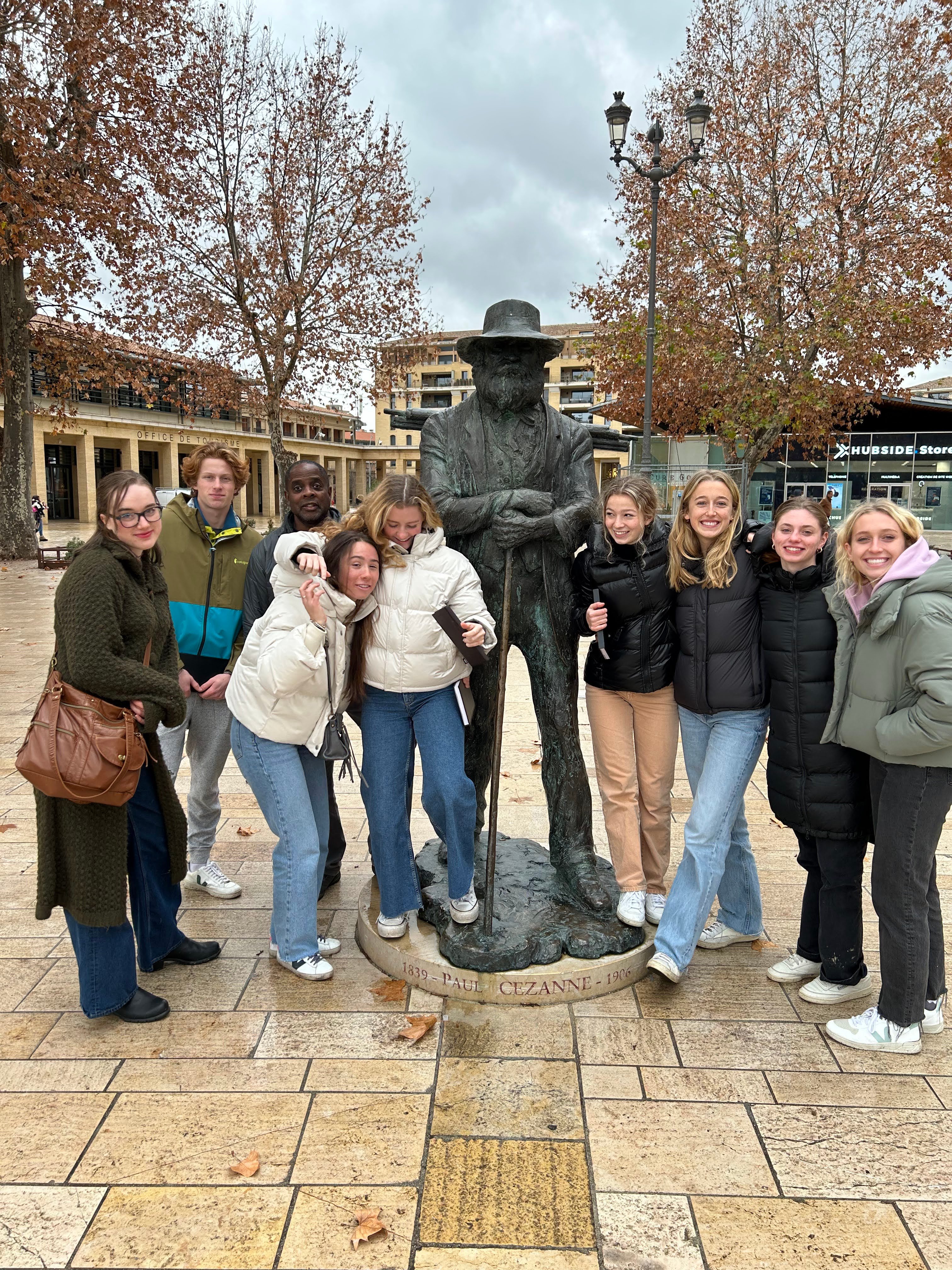
Although I hadn’t gotten much sleep the three days prior to my flight, either on the plane or in general, and in anticipation of this sojourn to our European Art Classroom, I felt completely energized and excited by the visit and what the days in France had in store for me.
Our students and their teachers, the husband and wife Fleming team, have experienced what other art and art history students have done for more than a generation in France. Once an immersive language program, European Art Classroom, in my estimation, is so much more. The language immersion with French homestays are now gone, but in their place is an artistic extravaganza fit for an Impressionist. Proctor students draw, paint, and discuss art, experiencing what they see in a way that makes vivid what other artists have come to know and love.
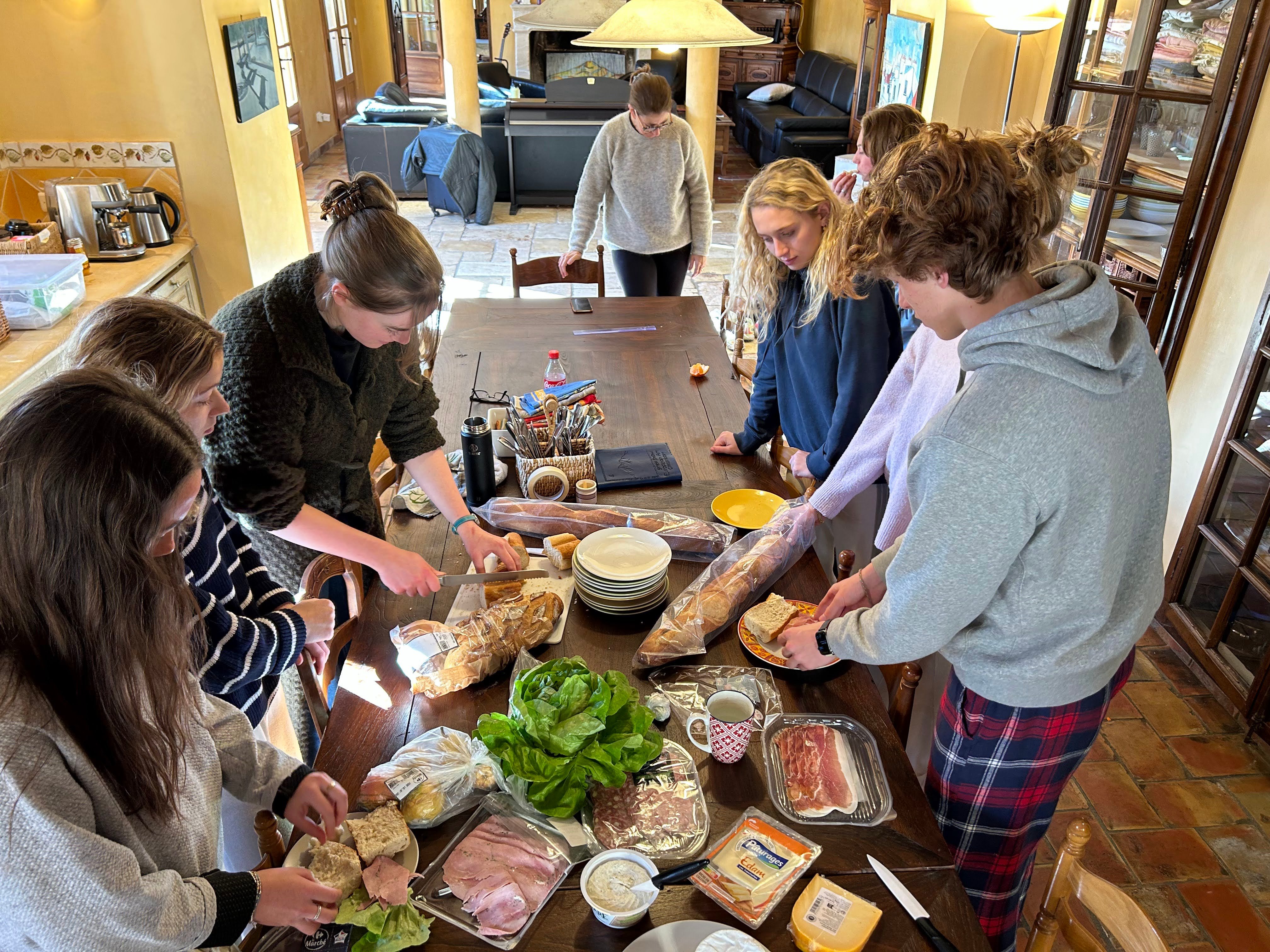
The European Art Classroom experience is as close to a family-feel as I have seen at Proctor because of the close proximity of students and teachers living under one roof. Perhaps Ocean Classroom and Mountain Classroom come close, with everyone under one roof almost every day, except Saturdays where students get to explore the surrounding city, Aix. Otherwise students and teachers eat together and reside together, in a sprawling chateau in the countryside, surrounded by dormant fields of lavender and grapevines. There is something about the closeness of sharing, making, and eating nearly all your meals - and creating art and art memories - with the same people for over two months that allows for an intense view into each other’s lives and world–and art.
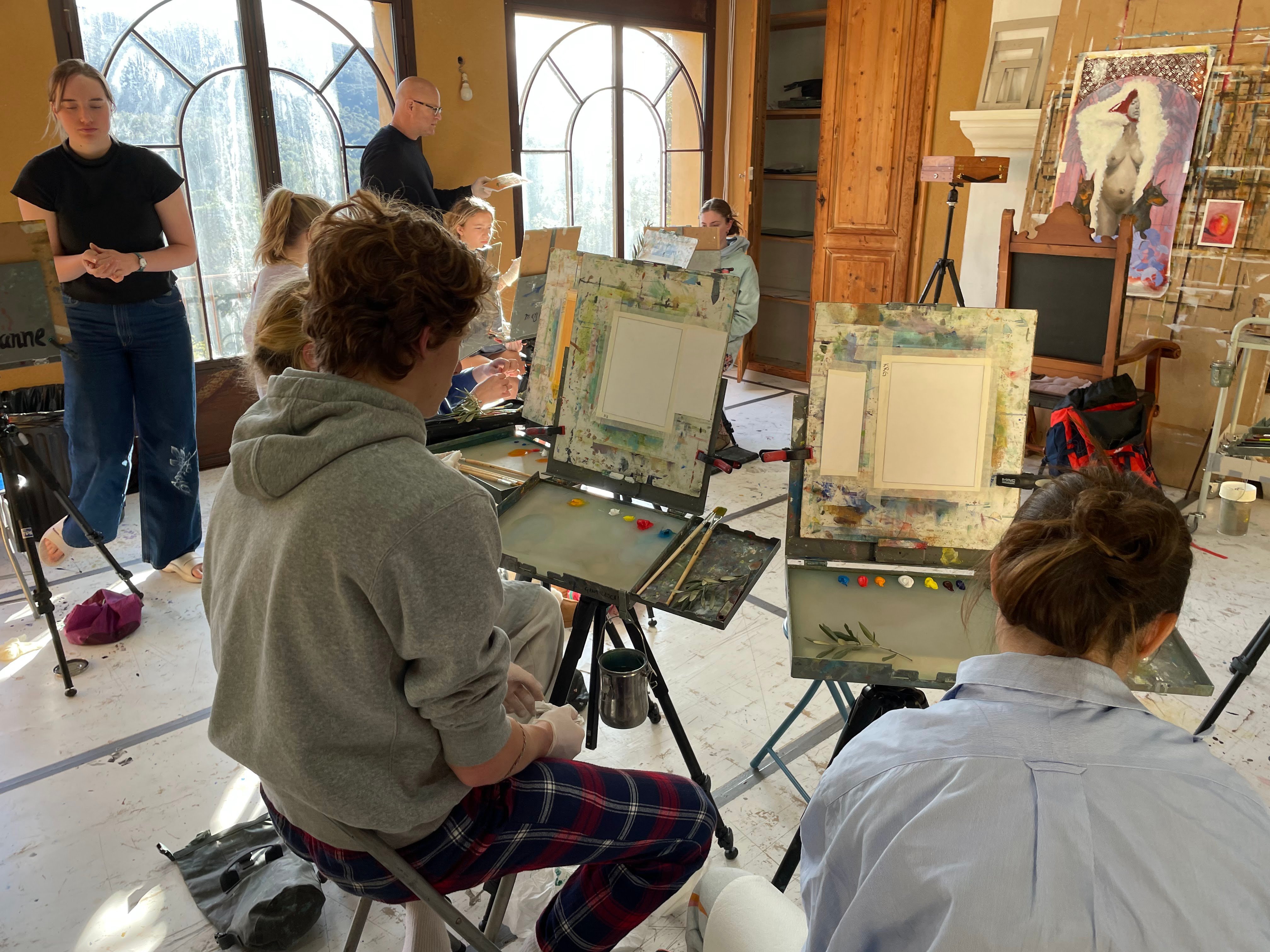
On my first night, the group prepared the quintessential French dish coq au vin, which happens to be one of Julia Child’s signature dishes. The students, as well as Jen and Dave, are genuinely excited to show-off the Frenchness of the place. The immersive experience is more than language, but it’s also culture and the lives and work of painters and those who do so for a living, as Dave and Jen are. At dinner time and in between times, the deliciousness of a buttery and unctuous sauce on a chicken cooking for hours or the funk of a truly French cheese adds to not just the character of European Classroom, but its consistency and sense of purpose and direction.
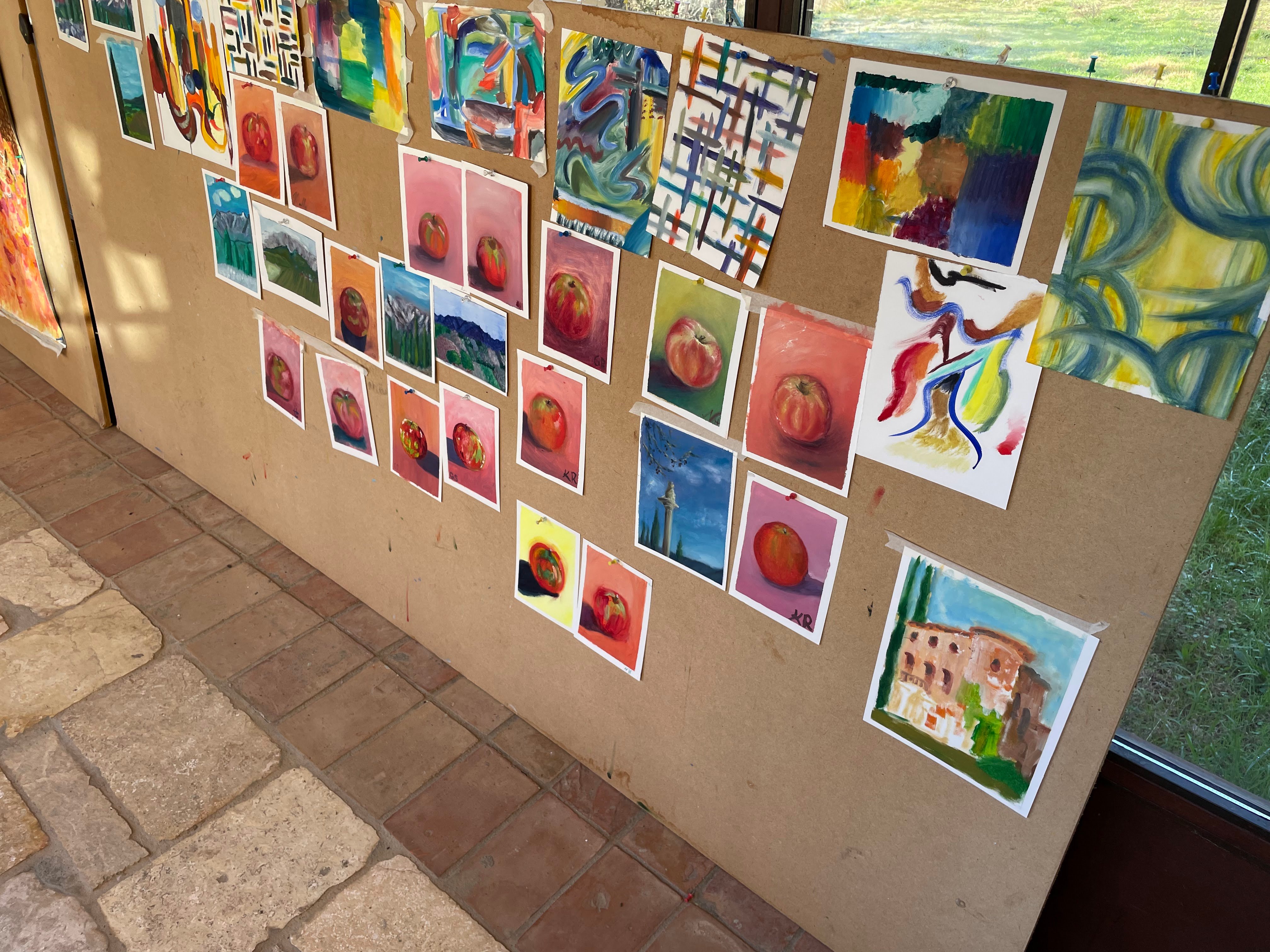
Man, did we (or I) learn a great deal in a very short amount of time! Whether it was walking down some of the narrow streets with Jen around Old Town in the bracing winter rain for the day’s literature lesson, or taking a jaunt with Dave to Église Saint Jean de Malte where in the museum next door we saw some of Picasso’s important work. And, we traveled to Paul Cézanne’s Atelier (studio), which was saved by American Armed Forces after the Second World War amid the theft and destruction of many of the world’s famous works of art. We imbibed so much in such a short period of time.
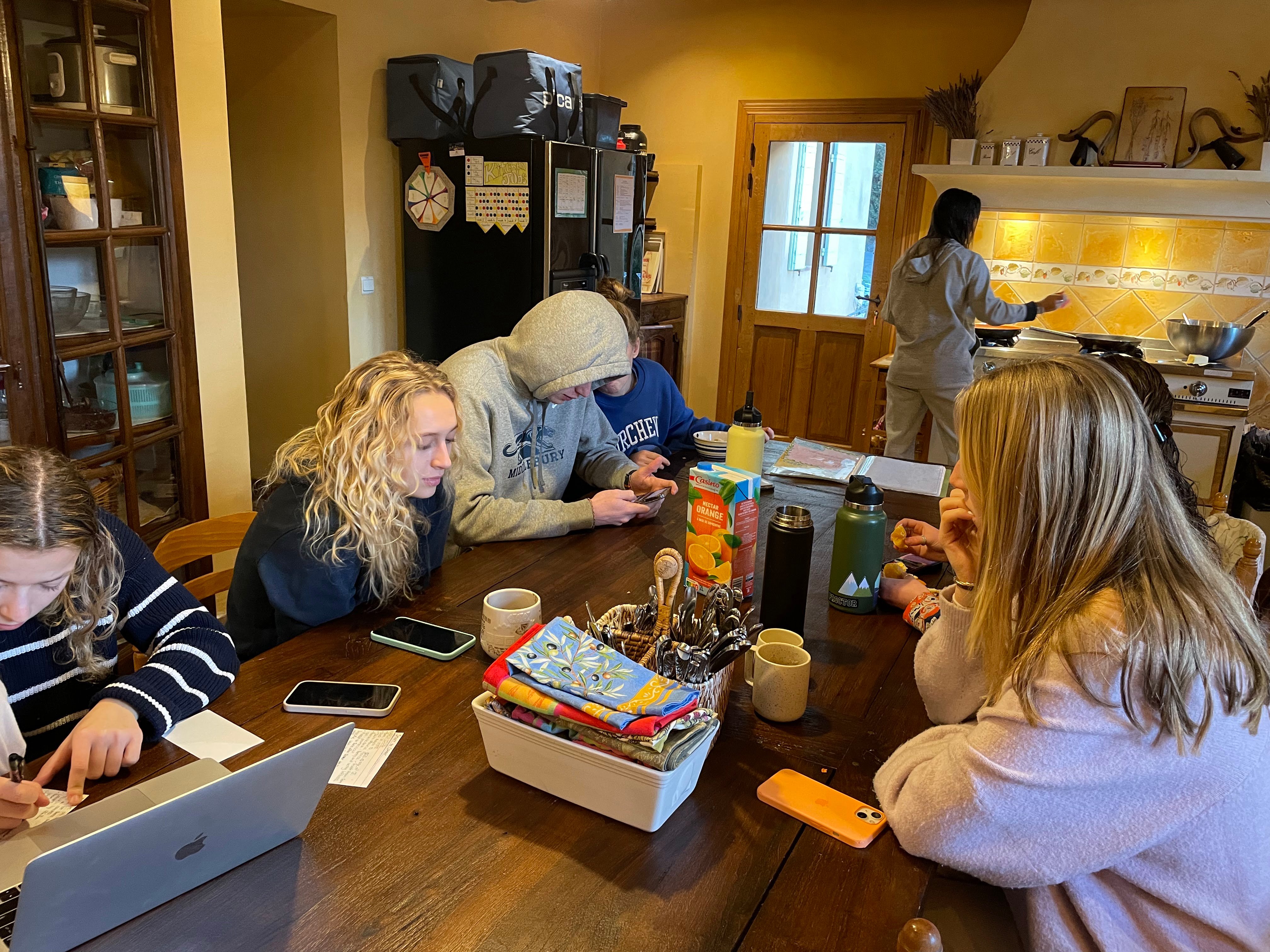
Everywhere we turned, the students dove in deep. They worked well past the time when I thought they would, into the 11 o’clock hour–or 23:00. Prepping for some of their eventual presentations, doing work little by little, much of what the students worked on got into their bodies and souls. Often our students would then go about experiencing what they were reading and seeing, through talks in art history class or in conversations walking to the cafe, much was discovered and uncovered along the way. Often students would read about a great work or that of an artist they were studying, and a bit later we would be at the actual site that their books pages were turned to during the day or at some other point in time earlier. Masterful teaching and previewing at its best.
For instance, the trip to Cézanne’s Atelier brought home the point that working artists actually work every day. Rain or shine. Cézanne even worked on the day he died. It’s an art, craft, and science of study. A life. As Dave mentioned, “Cézanne was trying to get under the skin of his subject to the actual bones of what he was seeing and painting.” The bones of all of what we saw was always ever present nearby, whether it was the actual human skulls that Cezanne used and painted, or Mont Sainte-Victoire, which was the mountain and landscape in his hometown that inspired and guided him for all of his life.
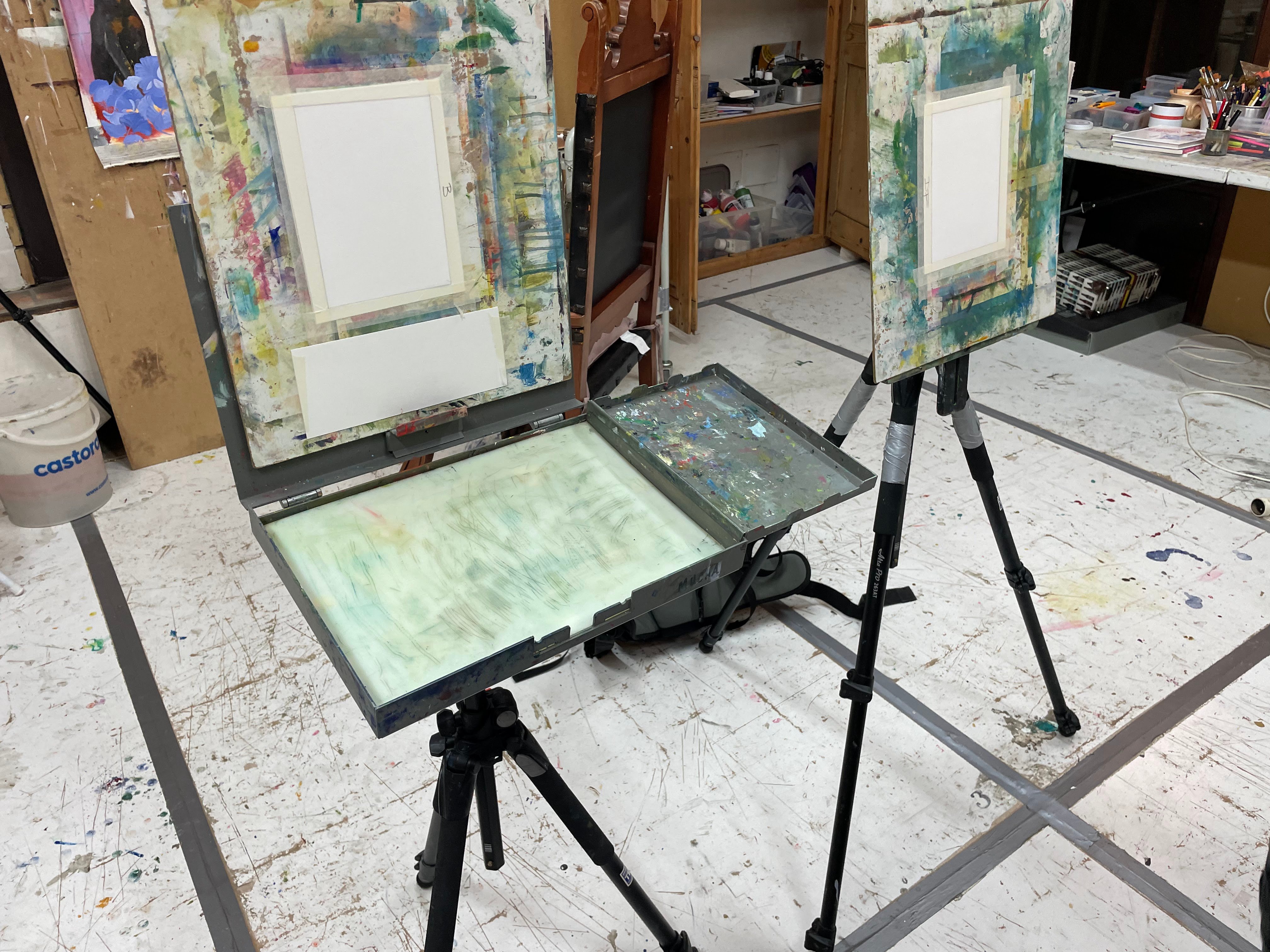
The pièce de résistance of my time with our Proctor friends in Aix, and there were so many to choose from, was during our painting sessions with Dave. Not only did we paint the rite of passage that was the still life of an apple, we also painted and focused our eye on an olive branch, one that we picked right off the trees outside our own atelier.
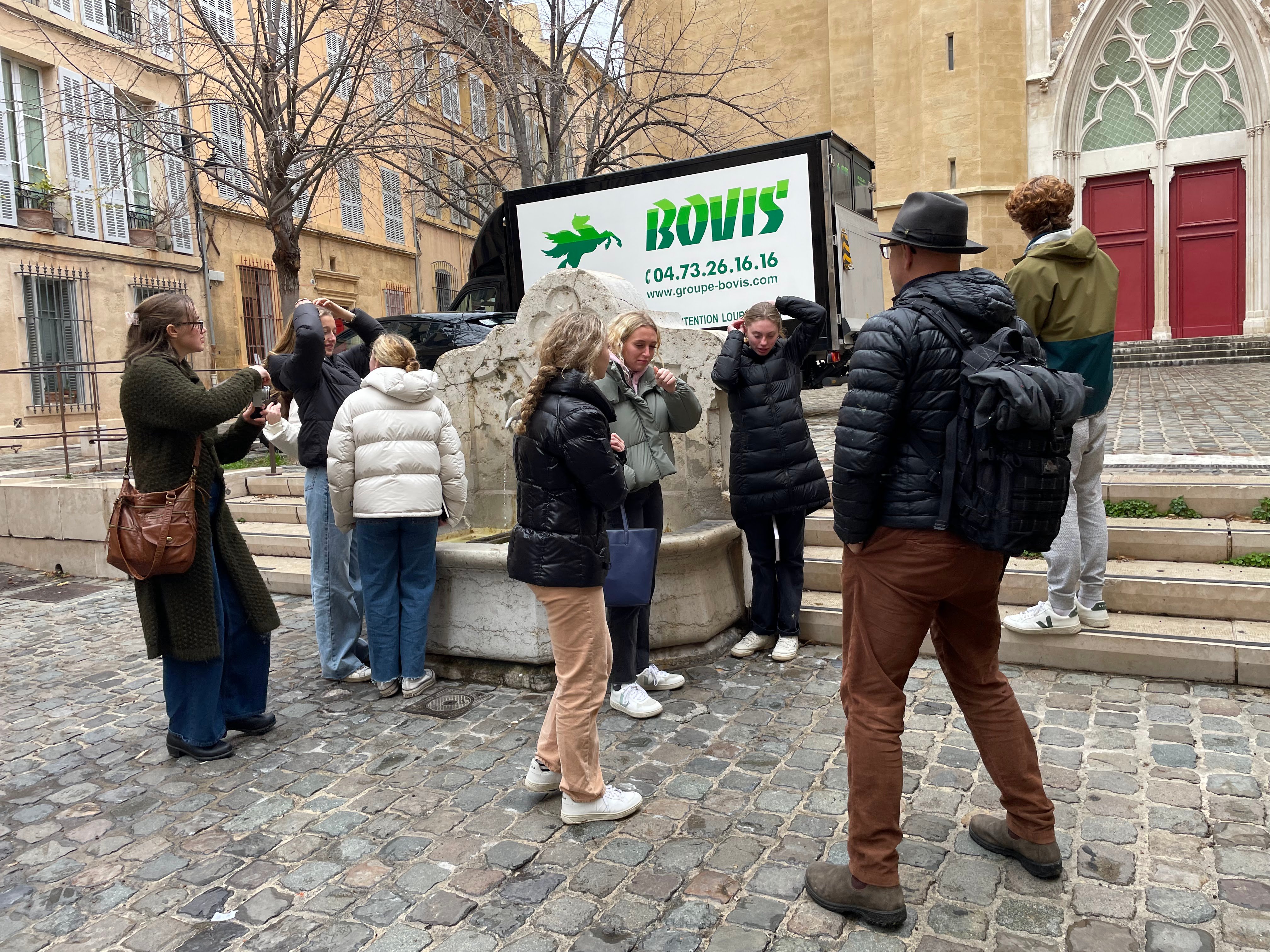
The rains had abated for a while, and the mountain outside our own window, which was called “the Duke” was peering down upon our collective efforts. Each person went on an excursion to find what might suit their needs. I picked a branch with many leaves. Others took a more Spartan approach to their branch, but we all painted our canvases with intense concentration and delight. Dave demonstrated precisely what colors we could mix to get the right hues to pop. While we watched, at first, intently, and then anxiously waiting our turns to try his techniques out with our own hands. After Dave’s demonstration, it was up to us to paint what we saw and what we could imagine. None of the branches bore olives, but in the end, ours all did. In the mind’s eye, which some painters used extensively before photographs were invented, we essayed what we saw. Each person having a unique view into the world of what we studied and now were beginning to love.
Aix-en-Provence, Dave and Jen, and all of the Proctor students present and past, feel the ghost of those other artists who came before us. We saw ourselves in a different way because of the guidance we received, the inspiration we took, and the love we shared–all around us.

Brian W. Thomas, Proctor Academy Head of School
Curated Reading:
The great man, Paul Cézanne, had many admirers. The poet Alfred Kreymborg (1883 - 1966) was one of them. Read his poem “Cézanne”: HERE








